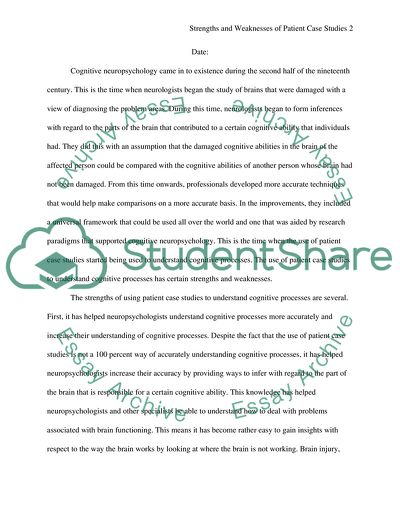Cite this document
(Patient Case Studies in Understanding Cognitive Processes Coursework - 1, n.d.)
Patient Case Studies in Understanding Cognitive Processes Coursework - 1. https://studentshare.org/psychology/1796697-critically-evaluate-the-strengths-and-weaknesses-of-using-patient-case-studies-to-understand-cognitive-processes
Patient Case Studies in Understanding Cognitive Processes Coursework - 1. https://studentshare.org/psychology/1796697-critically-evaluate-the-strengths-and-weaknesses-of-using-patient-case-studies-to-understand-cognitive-processes
(Patient Case Studies in Understanding Cognitive Processes Coursework - 1)
Patient Case Studies in Understanding Cognitive Processes Coursework - 1. https://studentshare.org/psychology/1796697-critically-evaluate-the-strengths-and-weaknesses-of-using-patient-case-studies-to-understand-cognitive-processes.
Patient Case Studies in Understanding Cognitive Processes Coursework - 1. https://studentshare.org/psychology/1796697-critically-evaluate-the-strengths-and-weaknesses-of-using-patient-case-studies-to-understand-cognitive-processes.
“Patient Case Studies in Understanding Cognitive Processes Coursework - 1”. https://studentshare.org/psychology/1796697-critically-evaluate-the-strengths-and-weaknesses-of-using-patient-case-studies-to-understand-cognitive-processes.


